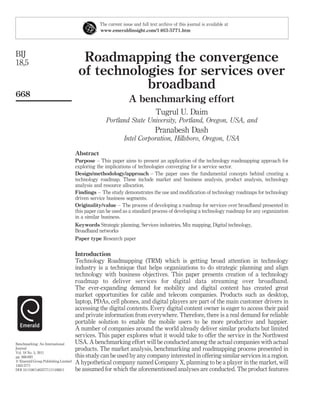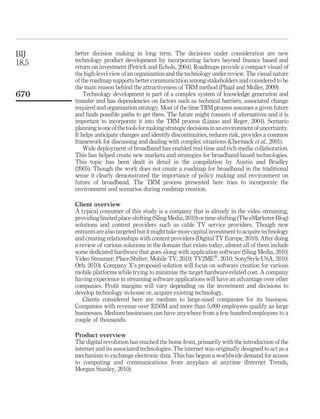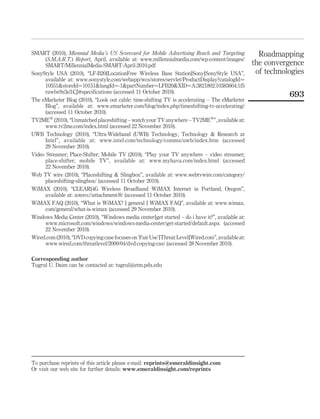This document discusses a study that created a technology roadmap to explore delivering services for digital streaming over broadband. The roadmap included layers for market analysis, product analysis, technology analysis, and research and development. It also emphasized the importance of considering the environment and policy factors. As part of the study, the authors conducted a benchmarking effort and market segmentation to identify customer value drivers. They then presented a product technology analysis and scenario planning to help identify opportunities and inform the roadmap. The process demonstrated in the paper can be used as a standard approach for developing technology roadmaps for organizations providing similar broadband services.

























